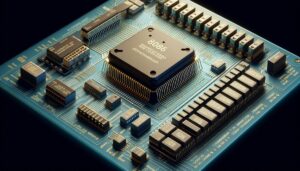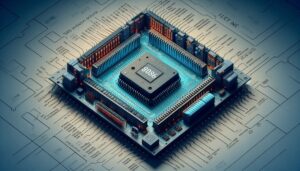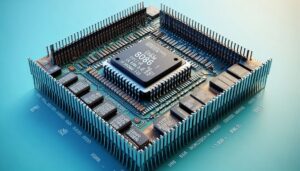The 8086 microprocessor is a very important piece of technology that was first introduced by Intel in 1978. It played a crucial role in the development of personal computers and is known for its speed and efficiency.
The 8086 microprocessor is a 16-bit processor, which means it can handle 16 bits of data at a time. This microprocessor was widely used in many early computers and helped shape the future of computing. In this article, we will explore the key features, how it works, and why it was so important.
Read more:100 Gk questions for class 3
Key Features
- The 8086 microprocessor has several key features that made it revolutionary at the time. First, it uses a 16-bit architecture, which allows it to process data more efficiently than earlier 8-bit processors.
- It has 20 address lines, which means it can address up to 1 megabyte of memory.
- The 8086 also includes 16-bit registers, which are small storage locations within the CPU that help with various calculations and operations.
- Another important feature is its instruction set, which includes a variety of operations that the processor can perform.
-

How It Works
The 8086 microprocessor works by following a set of instructions, known as a program, stored in its memory.
It fetches these instructions one at a time, decodes them to understand what needs to be done, and then executes them.
This process is repeated continuously at a very high speed. The microprocessor uses a clock to keep everything synchronized, ensuring that each step in the process happens at the right time.
Inside the 8086, there are many tiny circuits and transistors that work together to perform these tasks.
Applications
The 8086 microprocessor was used in a wide range of applications. It was the central processing unit (CPU) for many early personal computers, including the IBM PC.
Its reliability and performance made it a popular choice for embedded systems, which are computers built into other devices like printers, industrial machines, and even some early gaming consoles.
The versatility of the 8086 meant it could be used in many different types of electronic devices, helping to drive the rapid growth of the computer industry in the 1980s.

Evolution of the 8086
The 8086 microprocessor was a significant step forward from its predecessors, like the 8080 and 8085. It introduced new features and capabilities that set the stage for future processors.
Following the 8086, Intel developed a series of more advanced processors, including the 80286, 80386, and 80486, each building on the technology of the 8086 and offering even greater performance.
The legacy of the 8086 can still be seen in modern processors, as many of its design principles are still used today.
Advantages and Disadvantages
The 8086 microprocessor had several advantages, including its speed, efficiency, and ability to address more memory than previous processors.
It also supported multitasking, allowing it to handle multiple tasks at once.
However, it had some disadvantages as well. It required a more complex support system, including memory and input/output devices, which made it more expensive to implement.
Additionally, while it was faster than earlier processors, it was quickly surpassed by newer, more powerful chips.
FAQs
What is an 8086 microprocessor?
The 8086 is a 16-bit microprocessor introduced by Intel in 1978, used in early personal computers and various electronic devices.
Why is the 8086 important?
It was one of the first processors to use a 16-bit architecture, allowing for more efficient data processing and greater memory addressing.
What are the key features of the 8086?
It has a 16-bit architecture, 20 address lines, 16-bit registers, and a comprehensive instruction set.
How does the 8086 work?
It fetches, decodes, and executes instructions stored in memory, using a clock to keep everything synchronized.
Where was the 8086 used?
It was used in personal computers, embedded systems, and various other electronic devices.
Conclusion
The 8086 microprocessor was a groundbreaking technology that played a key role in the development of personal computers and many other electronic devices.
Its advanced features, such as a 16-bit architecture and extensive instruction set, set the stage for future advancements in microprocessor technology.
While newer processors have since surpassed the 8086, its impact on the world of computing remains significant.
Understanding the 8086 helps us appreciate the evolution of technology and how far we have come.











